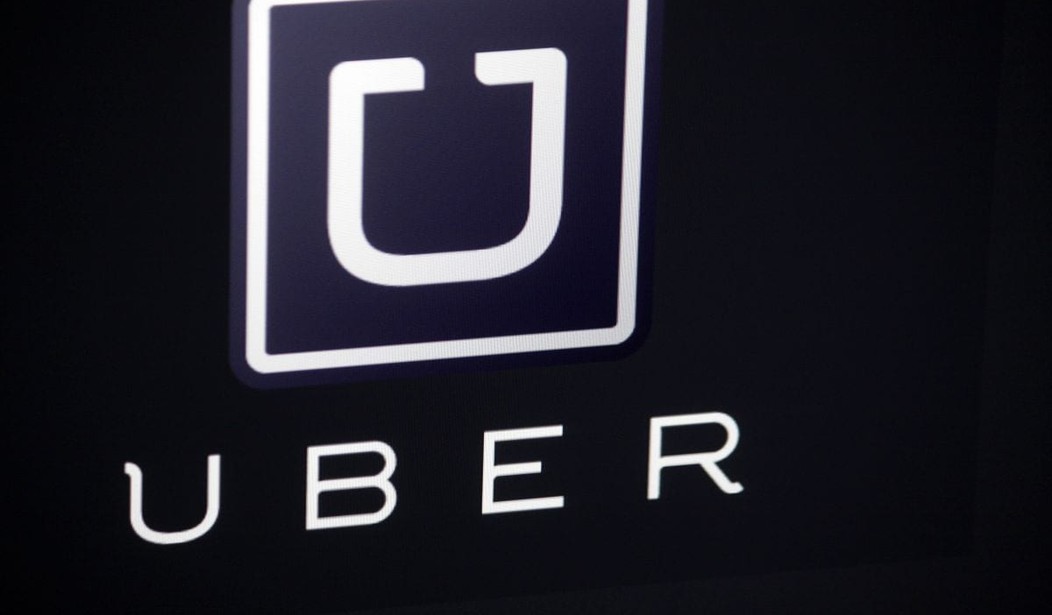The ride sharing app Uber started in New York City barely three years ago and already has 26,000 cars driving for them, compared to just 13,400 city taxis.
AP has an analysis of the advantages and drawbacks for riders, cab drivers, and passengers:
On a muggy summer evening, a woman stood on a midtown Manhattan street corner and switched between raising her hand for a taxi and glancing at her phone, possibly for an Uber car.
“She’s going to take whoever comes first,” yellow cab driver Jatinder Singh speculated as he scouted out the scene.
While New York City riders have increasingly more choices in how to get from here to there with the rise of e-hailing apps — and lawmakers grapple with how to regulate the booming industry — the drivers who keep cars moving are stuck in the middle.
Uber, a service that allows riders to choose a car type and pay by credit card from a mobile phone, has in four years gone from nearly non-existent to more than 26,000 drivers, joining the city’s 13,437 taxis.
Some traditional yellow cab drivers say that since the arrival of Uber, the increased competition has cost them about 30 percent of their earnings.
Uber drivers also have complained the crowded streets are hurting their bottom line, a notion disputed by the company, which is moving forward with a goal of adding 10,000 drivers by the end of the year. The plan alarmed New York City lawmakers who later backed off a plan to cap the number of cars on the street in exchange for ridership data to study the issue.
Uber was recently valued at $50 billion, and they’re going to need those deep pockets. Lawsuits against the company are multiplying as traditional cab companies, drivers, and even customers have attacked the company for a wide variety of perceived abuses. And Uber isn’t the only representative of the new “sharing economy” that has been targeted. Several other companies, including the growing housecleaning service Homejoy, have been hit with lawsuits:
The assault on Homejoy is part of a much larger and increasingly organized attack on sharing economy startups by plaintiffs attorneys, Big Labor and the political left. No less than Hillary Clinton bowed to this movement last month when she lamented that the “so-called ‘gig’ economy” is “raising hard questions about workplace protections and what a good job will look like in the future.”
In the last year such companies as Uber, Lyft, HandyBook, Instacart, Postmates and Try Caviar have been slapped with lawsuits arguing that they have misclassified workers as “independent contractors,” which aren’t covered by most federal and state labor regulations. The lawsuits demand backpay for overtime, workers compensation, unemployment insurance, unpaid meal breaks and business expenses. Homejoy was accused of not providing 30-minute meal breaks every five hours.
This can raise labor costs by upward of 20%, and far more in California where workers-comp premiums exceed 14% of payroll in the transportation industry. Companies with 50 or more full-time workers would also have to provide health insurance under ObamaCare’s employer mandate. Some lawsuits claim that the time workers spend driving to jobs and making phone calls counts as “work” and must be compensated under minimum-wage and overtime laws.
Labor groups are driving this assault because independent contractors can’t unionize. Startups are also disrupting the market for services, providing efficiencies and cost savings that often out-compete unionized businesses.
Lawfare writ large. If you can’t beat ’em, kill ’em. The enemies of what some observers are calling “The Next Big Thing” are looking to strangle this derivation of the sharing economy in its infancy.
There are other, more traditional “sharing” aspects to the sharing economy. In Maine, a new tool-sharing company has sprung up, warehousing items like chain saws, drills, even kitchen gadgets and lending them out on a weekly basis to members who pay $50 a year to join. This model is more like the communes of the 1960s and will probably remain small and local.
But Uber and other “evolved” companies in the sharing economy are not without their problems. As the New York City Uber drivers point out, the company has little incentive or desire to maximize the pay of its drivers, and, in fact, and the company is adding drivers as fast as it can, flooding the market which almost certainly depresses pay further. And other companies in the fast-growing businesses of house-sharing, apartment-sharing, and vacation home-sharing report problems with destructive tenants and a failure to carry out other responsibilities.
The biggest complaint against Uber is its so-called “surge pricing.” During last winter’s snow storm, Uber dramatically raised rates. The principle is sound — fewer vehicles on the road made a ride far more valuable. But New York City lawmakers are taking a dim view of this fundamental law of capitalism:
Speaking after an unrelated event in Brooklyn, Ms. Mark-Viverito said the Council would entertain a proposal from Brooklyn Councilman David Greenfield that would limit the company’s ability to drastically mark up rates during rush hours, holidays or severe weather. Under the proposal, Uber’s drivers—independent contractors who surrender 20 percent of their fares to the company—would only be able to ask double what they would normally charge.
“If we have the ability to legislate, then any legislation is appropriate. So we’re taking a look at it, and if it’s within our authority it’s something that we are looking at and I know it’s something that other council members have discussed, and the legislation is going through its normal process,” she said, adding that the bill could receive a hearing in the near future.
The speaker was unable to name any reason why such regulation would fall outside the Council’s power, and she said many New Yorkers have voiced complaints about Uber’s fare hikes, which can be as much as five or six times the usual cost.
Consumers expect the same level of service at the same price regardless of whether there’s a raging blizzard or it is a pleasant summer day. The City Council will impose price controls and during the next snowstorm, there will be even fewer Uber cars on the road.
The sharing economy creates value where none existed before. It works best when the price of a particular asset is high and the asset is not fully utilized all the time. That slack in usage is value that clever entrepreneurs are finding unique and creative ways to exploit. If big labor and liberals can be kept at bay, the concept of a sharing economy can explode in ways that we are only dimly aware at present.










Join the conversation as a VIP Member